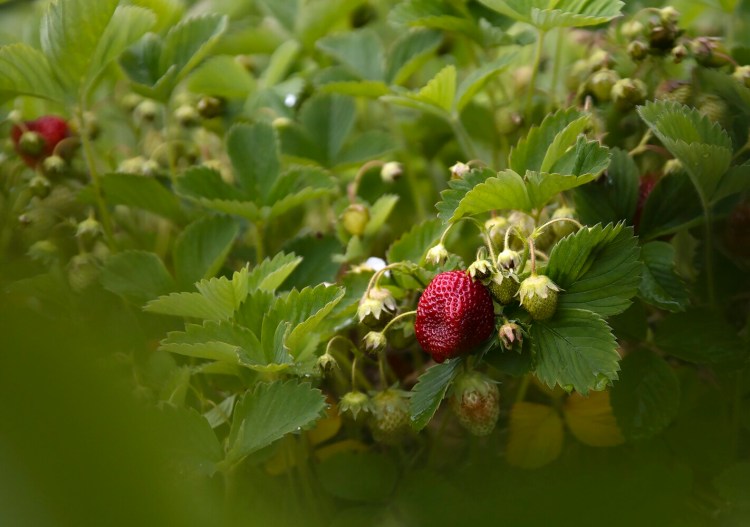Strawberry season is almost here, one of the highlights of my gardening season. Strawberry shortcake is a must-have on the Fourth of July and other midsummer celebrations.
Strawberries are technically a perennial crop. They are planted once, in early spring, and they can produce fruit forever after that. They usually don’t do that, however. The bed gets filled with weeds – mostly violets in our case – and production diminishes, with fewer and smaller berries.
The University of Maine Cooperative Extension says that beds usually last three to five years, but they can be renovated to last much longer.
We planted a new bed three years ago, when the old bed was about seven years old with declining production. The new bed is producing a bountiful crop.
As an experiment, just to see if I could, I worked last year to see if I could renovate the old bed. What else did we have to do during the year of COVID-19?
Part of the problem with the old bed, in addition to the violets, was that I had allowed the bed to widen – to more than 6 feet in some places. The ideal width, for easy picking, is about 2 feet, but I didn’t pull out the runners that were setting new plants, believing they would produce more berries that we could turn into more shortcake, pies and jam. The truth is that a 6-foot-wide bed is difficult to harvest, and I ended up stepping or kneeling on berries at the edge of the row while trying to reach the ones in the middle. It was messy as well as inconvenient.

With a little cleanup work, you could be picking lots of strawberries from your renovated bed. Photo by Peggy Grodinsky
The first step is to mow the strawberries, with the aim of removing the leaves without damaging the crown – the short, thick stem that connects the roots to the above-ground plant parts. I just put the mower at its highest setting. I try to remember to do this after harvest every year, even when the bed doesn’t require a complete renovation.
I then went through the entire bed with our broadfork, leaving only about a 1-foot row of strawberries untouched. You could use rototiller, spade or spading fork if you don’t have a broadfork. Then you go through the loosened soil removing all the weeds and strawberry plants.
Next, you go through the remaining 1-foot row with a hand trowel, carefully weeding and loosening the soil. If there are strawberry plants closer than 6 inches to each other, remove some of them.
At this point, fertilize the bed with a balanced fertilizer and spread about a half inch of soil over the remaining plants. Water thoroughly, and continue watering throughout the season, especially if the summer is as dry as it has been for the past few years.
I ignored the renovated bed until the end of the growing season. It is in the vegetable garden, so it got watered when the vegetables did. The Extension advises keeping an eye out for runners that are exceeding the desired 2-foot width, but I didn’t notice any spread this spring.
Sometime before the snow falls, probably in late November, mulch the bed. Straw is the usual recommendation, but we used pine needles because we have them, the same as we do for the garlic, and they worked fine.
In the spring, after removing the mulch, all the strawberry plants looked healthy, and the green berries are plumping up just as well as the ones in the new bed.
I’m hoping the two beds produce a bounty of strawberries this summer.
Tom Atwell is a freelance writer gardening in Cape Elizabeth. He can be contacted at: tomatwell@me.com.
Send questions/comments to the editors.



Success. Please wait for the page to reload. If the page does not reload within 5 seconds, please refresh the page.
Enter your email and password to access comments.
Hi, to comment on stories you must . This profile is in addition to your subscription and website login.
Already have a commenting profile? .
Invalid username/password.
Please check your email to confirm and complete your registration.
Only subscribers are eligible to post comments. Please subscribe or login first for digital access. Here’s why.
Use the form below to reset your password. When you've submitted your account email, we will send an email with a reset code.